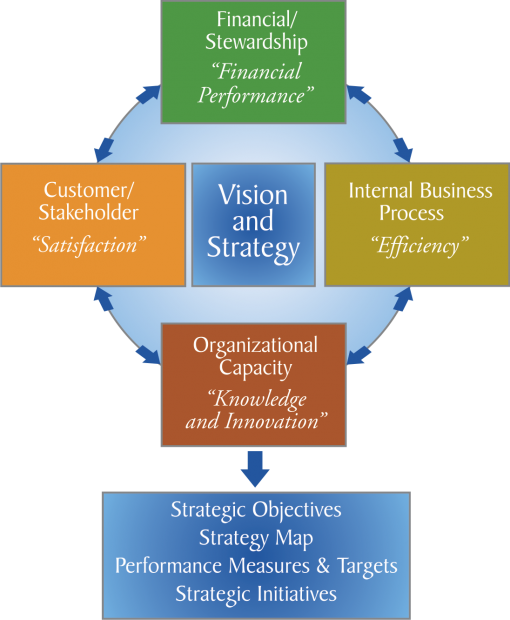A business that strives for continuous success and improvements needs to have set goals and objectives. In order to accomplish these goals, a mechanism of measurement must be in place in order to evaluate the objectives against the desired progress.

When a company is struggling to obtain results, return on investment is usually lower than the invested capital, shareholders are pulling out, employee performance is low and the turnover rate is high. These symptoms of a lack of organizational control and structure often originate from a loss of operational control and processes that help an organization to measure and compare the performance of the business against its strategic and operational objectives. That is when managing by KPIs (key performance indicators), also called “key success indicators” can be a useful tactic to get the company back on track.
How does a business create KPIs and use them to measure performance?
The first step in determining KPIs is to define the goals. Some key questions may be: how can the organization turn its vision into reality? How should the company structure the plan of action and measure the performance? What do they need to achieve and by when? How will they get there? What are the required resources? Who are their stakeholders? What are their expectations? What kind of skills do employees need to have in order to perform the tasks assigned and to meet the business objectives?
Once the business objectives are well defined, a measurement mechanism can be put in place to help quantify, qualify and compare the business' performance against its vision and targeted goals.

How do we measure the business performance?
One way that businesses measure their performance against their strategic vision is to use a “Balanced Scorecard”. This tool was created by two Harvard Business School professors, Dr. Robert Kaplan and Dr. David Norton. It is a strategic planning and management tool which helps to align a business’ activities to its vision. According to the Balanced Scorecard Institute, this tool adds “strategic non-financial performance measures to traditional financial metrics to give managers and executives a more ‘balanced’ view of organizational performance.”
Using a tool like this can also help to evaluate the strategy of the organization, improve internal and external communications, and monitor an organization’s performance against its strategic goals. It may also help a company quantify its overall progress, performances and financial metrics so that managers have a clear breakdown structure that show how the business is doing and which areas need improvement.
When companies use well-defined measurement tools such as the Balanced Scorecard, they have more control over the progress and performance of their businesses. This, in the long term, might be more effective than choosing to wait and see what the future holds.
Sources and credits:
Balanced Scorecard Institute
Harvard Business Review
Picture credit: http://www.balancedscorecard.org





Thanks for the reminder. It's not something you need to do on a daily base, but common sense dictates to look at it at least once a week or twice a month. I'll get right away on it.
Thanks for the reminder. It's not a daily task and common sense dictates to have a look at least once a week or twice a month to know where you are standing and heading. At least have 3 monthly figures for your quarterly reports. I can live with that. Great article.
Thank you for the comment, Wolfgang. There are a lot of things that common sense dictates to us. But from a business performance standpoint, one has to rely on a reliable process that measures the progress against organizational objectives.
Great article!
KPIs and Balanced Scoreboards are critical instruments to effectively measure and document progress or performance of an organization.
It is an art and a challenge to define KPI that are relevant and helpful in defining the right actions to keep an organization on the success track.